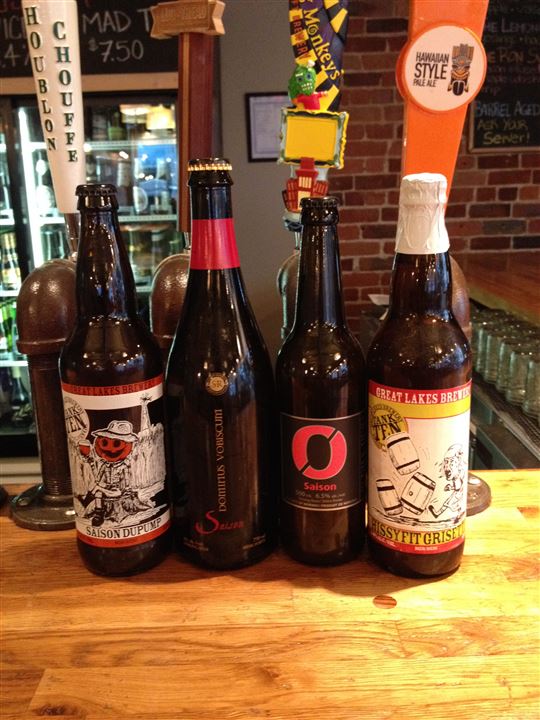Tis Almost The Saison; So Get Your Says-On!

Imagine that you’re working on a farm in Belgium or France (it sounds a little more glamorous across the pond for some reason). Now imagine that you are given a constant and steady stream of spritzy-fruity-herby-spicy-lightly-hopped beer as part of refreshment and hydration to continue enduring hard, physical labour during the summer months. That sounds like a pretty good gig, no? (Maybe you should be wearing a T-shirt that says ‘Will Work 4 Beer’!) Well, back in the late 1800’s and early 1900’s, this was the way of farmhouse life in parts of Belgium and France.
So it began; Saison and Bière de Garde styles of beer were born from a broad range of ‘farmhouse ales’ of whatever was on hand; rye, barley, wheat, spelt, and potentially last-years hops if they were still kickin’ around. If hops weren’t available, herbs and spices were a likely substitution- and so on and so forth. They have since evolved into their own modern range of flavours and styles today, and we should be thankful for these refreshing ‘summery’ brews as they can be quite versatile with food- all year long, (remember our Thanksgiving blog post?)
Christmas is just around the corner, ‘tis almost the Saison!
Saison of course, the French word meaning ‘season’ eventually became the name of these old-fashioned farmhouse ales as they were brewed during the winter months (due to more favourable fermentation conditions before the new-age days of mechanical refrigeration), and consumed during the summer months by farmhouse employees. They gave brewing employment during the winter months for farm workers, and re-hydrated those same workers throughout the summer and fall seasons. The ‘spent’ grain used for making the beer was often ‘recycled’ by feeding livestock on the farms. As you can see, Saisons and Bières de Garde played a vital role in early farmhouse life.
Modern Saisons and Bières de Garde are their own sub-categories of farmhouse ales, stylistically speaking. They each evolved from different regions, Saison originating from Wallonia, Belgium, and Bière de Garde from French Flanders. Generally speaking, you can expect certain differentiating characteristics from both despite the plethora of brewing variations based on adjuncts (hops, spices and herbs especially).
Belgian Saisons are often brewed with pale malts and sometimes have white pepper or orange peel added to their range of flavours. They tend to lean toward the dryer end of the spectrum and often boast more hop bitterness which is accentuated by high carbonation. Along with cork closure, bottle fermentation and maturation are also common practices of these rustic ales (think Champagne, Oui! Oui!)
Classic French Bières de Garde tend to pour a pretty amber hue and their aromas are often more malt dominant but not cloying, showcasing spicy and hoppy undertones on the palate. They too will often see a cork closure (more Champagne, s’il vous plait!) This can give a desired ‘mustiness’ that is reminiscent of an old farmhouse.
Primitive styles of these beers were often around 3%-4% abv, as the intention was NOT to get the farmhouse staff loaded while on the job, but simply to quench thirst. Contemporary styles now range between 5%-8% abv, so…..bottoms up!
All of these different flavour components can make for extremely food-friendly beer pairings. But don’t take my word for it, go pick up a few Saisons and Bières de Garde and have fun discovering your own matches!
Written by Kristin Perrin
Originally posted for Brother Bistro Blog
References: The Oxford Companion to Beer by: Garrett Oliver
